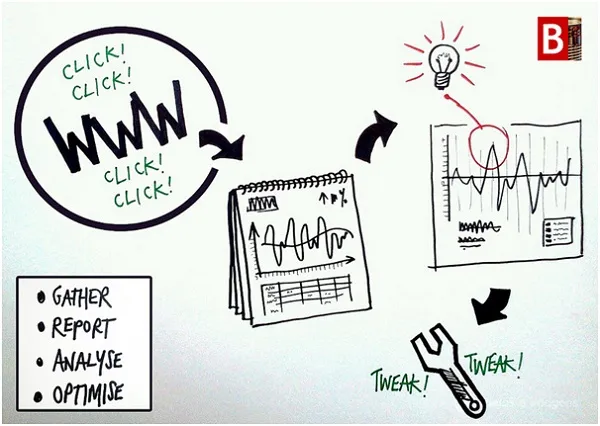How analytics can help a startup ?

Dealing with the challenges of your startup is never easy. Many a times, the ideas you think are sure to work, don’t work and the ideas which were not in your mind while starting up, turn out to be the next big thing!If you are like most of the startup owners, starting an analytics practice might just sound like leading another startup! Who has the time to look at anything beyond designing that killer product?
This is the reason why most startups either don’t have an analytics practice or have one which is inconsequential to their strategy.
Whenever I bump into an owner of a startup, it is only a matter of time before some of these questions come up:
- How do I start / set-up analytics for my startup?
- What are the best analytics tools to use for my startup?
- How can analytics help me with my business plan?
- I know analytics can help us immensely, but I don’t know where to start. Can you help?
(P.S. The articles assume that you are not one of the analytics based startups. If you are, then your strategy would be very different to what is mentioned here. )
Let us start with ‘How analytics can help a startup?’ I’ll lay out my views along with a few case studies. The answer to how analytics can help your business actually depends on what stage your startup currently is in:
1. Seed / Initial stage:
At this stage, you are still in the discovery mode. Your analytics strategy should make sure that you are tracking yourself against your goals. So, if you are testing whether customers will use services provided through your website, you should be tracking the following metrics: Visits, Unique number of visitors, engagement of visitors and final conversion.
Common mistakes startups make at this stage are:
- Not defining clear and specific goals – it may be difficult to define goals at this stage because things can turn in any direction. However, you still need to have defined goal posts. They can move depending on how circumstances pan out, but not having them is definitely not on.
- Looking at wrong metrics or looking at vanity metrics. The concept of vanity metrics was introduced by Eric Reis in his book ‘The Lean Startup’. These are metrics which don’t mean much when looked by themselves. For example, visits alone as a metric is irrelevant unless you look at unique visitors, their engagement and sales.
Once you have clearly defined goals and metrics, you have a good framework to check how things are panning out for you. One piece of advice on the framework, try and segment your population as much as you can.
2. Growth stage:
This is the time when analytics can become a lot of fun and be the true driver of your strategy. Test out your hypothesis before rolling it out, try out variations in processes/customer journeys -- you are limited only by your own intent and imagination. Agility is the key here. Think, test, implement and analyse your ideas quickly to see what works and what does not.

I found a very nice case study here (page 6 & 7 of the file) on how Airbnb, one of the fastest growing startups tested its product, validated their hypothesis and then rolled it out at the start of their growth phase.
One of the common questions I get from people at this stage is, “There is too much changing to perform any meaningful testing. Hence, I use my gut to take decisions.” If you think you are in this situation, you need to take one test at a time. Irrespective of how many things are changing, you can (randomly) divide customers in two groups and test your idea on basis of those changes.
Some of the most common answers you get using analytics at this stage are:
- Which features of your product / website are used by customers? With what frequency and engagement?
- What is the right target market? Right geography? Right profile?
- Is there a highly loyal group of customers among the ones you have? How can you get more of them?
3. Matured stage:
At this stage, benefits of analytics and its application would be very similar to any existing organization. There is tons of material available on the net to showcase benefits of analytics here. Hence, I wouldn’t spend a lot of time explaining that again.
In case you have not designed/created your data infrastructure yet, you need to do it NOW! Take up some of the economically scalable analytics tools on the cloud (I’ll cover this as a separate post as well) and invest in quality people to lead your analytics function.
If you have some specific questions on the subject, please feel free to reach out to me on kunal.jain@analyticsvidhya.com

About the guest authorKunal is founder of Analytics Vidhya, one of the most read blogs on analytics in India. He is an aerospace engineer from IIT Bombay, who loves crunching and munching data in any form. His professional experience in analytics spans across several markets across the globe. You can connect with him on Linkedin here.
Image credit: citizentekk, Beantin webbkommunikation via photopin cc







